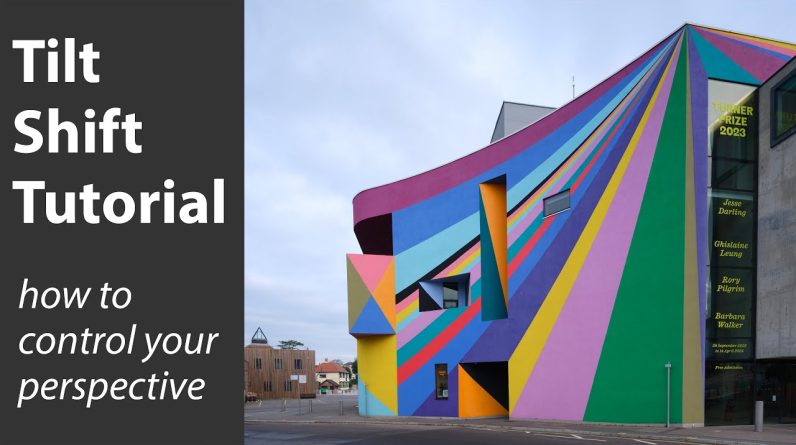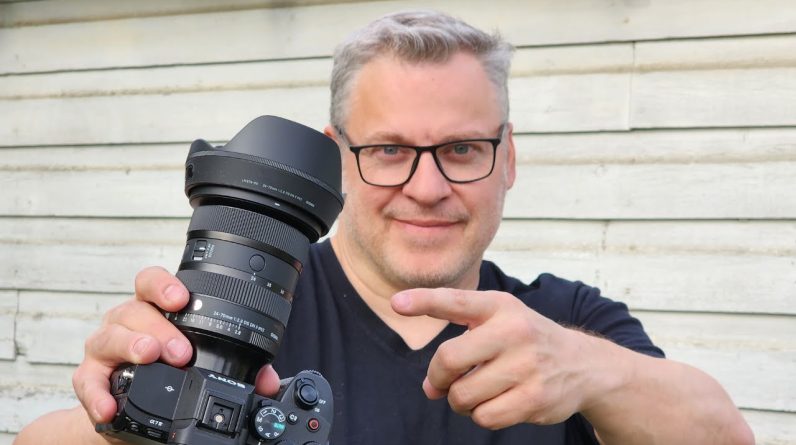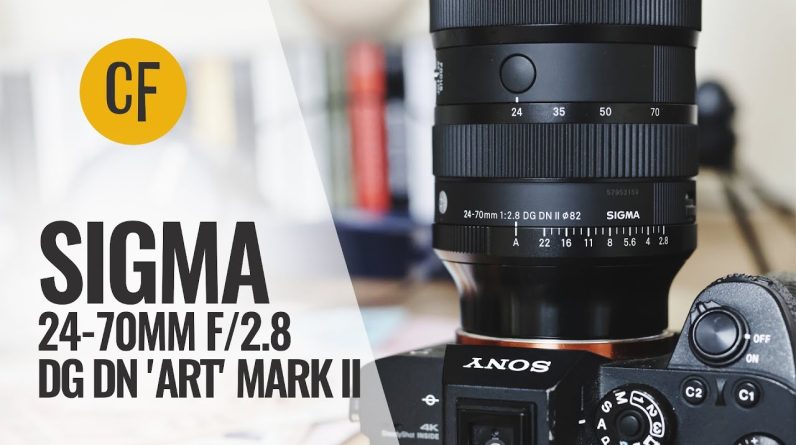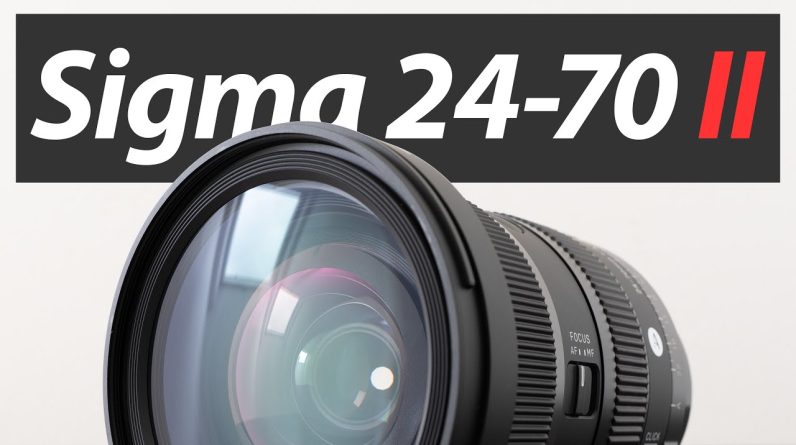[intro music] Hi, I'm Dustin Abbott, and I'm here today
to give you a overall look At the Samyang V-AF series, To kind of define what they are, to see if
Samyang's claims hold up on the Three lenses that have been released
in the series to this point, And to talk a little bit about them in general,
and to see if Maybe they are a fit for you. Now, I will follow up with individual reviews
of each one of these lenses. I've been working on three of them to this point.
More on that in just a moment. But I'm really intrigued by this series and the
practical applications for modern shooters – For the simple reason of this. Increasingly, we have seen that The capture of images has become more
of a hybrid technology, And that's reflected in the cameras, and that What used to be, you know, stills-only cameras Begin to add on some, you know,
very tacked-on video features that Have progressively grown to the place to where
now a modern camera being released. These are coming in a Sony mount,
so we'll look at Sony specifically, That modern Sony cameras are almost
equally capable as Video-capturing devices
as they are stills-capturing devices. And so we've seen this progressive move
towards hybrid features in cameras, But less of a similar move towards a
hybridization of actual lenses, And that we have had, you know, obviously, Photography-related lenses that have
autofocusing motors often, And, you know, photography-related features,
and then we have cine-related lenses that Are designed for video, have some
video-specific features, Tend to be manual focus only. But most modern photographers are not really
looking for manual focus, And even if they wanna do some video work, They may do some situations where they might
wanna do some pulling of focus. But in many situations, what they want is the
ability to have autofocus for that. I think Samyang has really recognized
a need in the market, And they have leveraged their Tiny series, which,
as you probably know, I'm a fan of, To provide the basis for this new V-AF series.
Now, the Tiny series, because it's been released
over a period of time And during a period of time in which
Samyang was really growing as a lens maker, Particularly when it comes to autofocusing lens, That as a byproduct, you see kind of a
growing progression of features And controls as a part of the lenses. Originally, like the 18mm and the 45mm,
when they were released, They were plastic fantastics. You had just the lens barrel and a, you know,
very plasticy focused ring, and that was it. They had very great optics inside,
but nothing going on as far as featuring. As time progressed, we saw with the
release of the 75mm That they added a custom switch that allowed you
to use the aperture ring, Or the manual focus ring as an aperture ring,
give you a little bit more control there. The 35mm F1.8 added weather sealing,
then the 24mm added a focus hold button. I love the optics of the 45mm F1.8,
but again, I begin to really wish, "Wow, I wish this had
weather sealing. I wish this had the custom switch.
I wish this had the focus hold button." So I'm really excited to have a chance to revisit
some of these lenses with a full feature set. And I'm enjoying using these lenses that excel
really at both things – both video and stills, And we'll highlight that in this today. There is a plan of five lenses in this series,
including a 20mm, a 24mm, a 35mm, A 45mm, and a 75mm T1.9 lenses. Now, initially, the releases include the 24mm,
the 35mm here, and the 75mm, And I am reviewing those first three collectively
all at the same time, And then the 45mm and the 20mm
are to follow. And I have to say, I'm really, really excited about
both of those lenses. I love the 45mm, and it seems like they've
improved a few things about it, Like the minimum focus distance, and then
of course, a high-performing 20mm T1.9 would be a fantastic addition.
So I'm looking forward to that as well. So today, I'm gonna give you an overview of How it all works, how I've found them. I've tested off Samyang's claims at this point,
so I'll cover that as a part of that, And we'll take a look at all of those things
right after a word from our sponsor. Today's episode is brought to you by Fantom Wallet –
The minimalist modern wallet that is now
even better with the new Fantom X, That is crafted from aluminum
right here in Canada. It is 22% smaller and 35% lighter, While still making it easy to access your cards
and money when you need them, Thanks to their unique fanning mechanism. You could even customize your wallet
due to its modular design, With accessories like a money clip,
cash holder, ID display, And even Chipolo and AirTag tracking integration. Visit store.fantomwallet.com to check out
their unique sizes, styles, and finishes That span from aluminum, to wood,
to carbon fiber, And use code "DUSTIN15" for 15% off
when you're ready to check out. Now, the Tiny series, as designed for photography, They had the photography designation.
So for example, I'll use this 24mm. I have both the Tiny version here,
which is a 24mm F1.8. The new V-AF lens, because it is designed around
a cine standard, Is a 24mm T1.9. And so, stills photography lenses are designed
around the physical aperture, How big the aperture iris can open up.
In this case, It can open up to the standardized size of F1.8. Video lenses, however, are more interested in
how much light is going to reach the sensor, And so that you can have a standardization of that. And so they measure T-stops
or transmission stops. It's almost always the case where you have a
little less in terms of light transmission Than what you do in the maximum physical aperture For the simple reason that that light
has to pass through The various glass elements that make up
the optical design, And there's going to be a little bit of loss of light
as a part of that process. So the very fact that these are so close,
from F1.8 to T1.9, Means that these are actually quite efficient. In terms of their overall design,
light transmission is quite good. I've seen a lot of F1.8 lenses that when tested,
had a T-stop as small as, for example, T2.2. And so, I'm actually impressed by
the consistency of that. And so all of these have the exact
same light transmission.
That's really important if you're looking
to standardize across A set of lenses, and of course, standardization is
one of the key components of the V-AF design. All of these lenses are identical in size. They all have the exact same diameter of
72.2mm – that's 2.84 inches. They're all 71.1mm in length. Also, you know, a little bit smaller, 2.84 inches,
but it rounds out to the same. They all have a 58mm front filter size, They all weigh in at 280 grams
or 9.6 ounces. And so as far as the physical design,
they're all completely standardized. And so every lens, regardless of its focal length,
is going to be the exact same size. So part of designing around a
common standard means that There is a little bit of compromise that
comes into the size And that all of these are going to be slightly larger
than their Tiny counterparts. And you can see that they're still compact lenses,
but they are just a little bit bigger And a little bit heavier in every case
than the Tiny lens that came before them. Part of that, however, though, is that
these are much more feature-rich, Including something like upfront.
You have a kind of a titanium-looking Metal ring at the front, but there also is, Basically, a metal lens bayonet mount
on the front of the lens as well, And that is to allow for an accessory ring. So in this case, the only accessory that has
been released to this point, I've got it mounted on the 35mm over here, And that is a manual focus adapter. But there are also electronic contacts at the front
of them to allow for electronic communication. It gives Samyang some flexibility on how they can
design these accessories in the future. So for example, this manual focus adapter, It continues to have the tally lamps in the front, And so you can visually look at that in front. And that is one of the features that's a part
of the V-AF series. There is a tally lamp at the front
and then also at the side, So whether you are monitoring from the front,
like I would be right now, Or monitoring from the side, you can actually see
when recording is taking place. In this case, you can actually change the
colors of the lights in Using the lens station from Samyang.
In this case, the standard is that it's going to be
green during standby, And it's gonna be red during recording. And so I've been doing a lot of
recording over the last, You know, five or six weeks using these lenses
for just these type of episodes. And so I could see. If I was looking at the lens,
I could see that tally lamp showing me That recording was taking place. You know, a nice little feature for
when you're actually doing video recording. And then, of course, you could also monitor
from the side as well If you were, you know, operating the camera rather than
sitting in front of the camera like myself. All of them have a standardization
of the custom switch, Which now has even more flexibility
due to these lenses. And you can control that, again, by using the lens station,
which I highly recommend that you get If you're going to own these lenses
for the firmware updates, But also to give you more customization
and control over them. And also, there's a focus hold button,
and that, obviously, for the most part, Is going to be controlled from within
the camera body itself. For the most part, the focus ring in the Tiny series Was just kind of plasticy and none of them
were all that great. In this case, we have a infinitely better-feeling
focus ring that is smooth, Nicely damped, and it has a full 360 degrees
of rotation, and it is linear. And so that allows you some repeatability, Though, obviously, you can improve that
with the manual focus adapter, Which we'll talk about in just a second. All of these are now standardized to where they
have six weather sealing points throughout. The fact that they all have the exact same body
means that All can be weather-sealed in the exact
same way as well. So because of having that front accessory
mount there, None of them come with lens hoods, nor are they
really compatible with traditional lens hoods, And you'll find that the actual cap is
one that covers over the top, And I will note on that. They have a little
cutout on the side of the cap That allows you to see the lens designation. The fact that all of these look identical Means that you're probably gonna want to utilize
that if you own more than one of them. It allows you to quickly visually see
which lens you're reaching for.
And trust me, if you have a number of these,
I've had three of them in a Camera bag at the same time, You really wanna be able to see which one
they are, 'cause they look identical. They all have a nine-bladed aperture, They all have linear focus motors. So as Samyang claims, they are completely
standardized all across the board, Which, obviously, is really important,
particularly for video work. But it's also kind of nice though
for stills work as well, because You know exactly how the lens is going
to handle and feel, And I really enjoyed that aspect of it as well. So obviously, there are gonna be some things
that are specific to each individual lens. That will include things like minimum
focus distance. You can see that from this chart here. They also are going to have individual optical performance,
and that includes focus breathing. And while Samyang obviously has worked to
minimize focus breathing in these lenses, You're still going to see quite a variation. There is a minimal amount of focus breathing in the
24mm, a little bit more on the 35mm. There'll be a bit more still when the
45mm is released, And a fair bit in the 75mm. I should point out that as third-party lenses, These are not currently compatible with
Sony's focus Breathing Compensation. That's gonna be one potential mark against them, Particularly something like the 75mm
that does breathe a little bit more. Let's take a moment to talk about
these accessories. There's only one to talk about at the moment, but obviously,
the potential for more to be added. So why a manual focus accessory When you already have a really nice manual
focus ring on the lenses themselves? There are a couple of factors there
that I think that are relevant. The first of those is the fact that On any kind of mirrorless design lens
that has autofocus, It is focused by wire, which means that
as a byproduct, The input that you put on the focus ring is going
to be routed through the manual focus motor. Byproduct of that is that you can't have
any kind of hard stops. So what we have got here is now, we have
an accessory that does add hard stops.
The other thing that you don't have
with focus by wire Is you don't have a distance scale
or distance markings That allow you to repeat focus pulls. You get that also on this accessory. And so they've managed to standardize that by– It kind of changes from lens to lens Just how much each kind of
focus throw accomplishes. And so, in some cases, you are getting a little bit less
than that 300 degrees of rotation. So it is a cleverly-designed accessory here
that I've already found very useful, And I can get really, really nice focus pulls
by using it. I will also point out that it easily is removable, Easily mounts and locks into place.
You just line it up with the contacts, And then you have a lever that
locks it into place. It does retain as noted that a tally lamp
there at the front, And it is compatible with a 95mm matte box. So as we move towards conclusion, let's take a look
at some of Samyang's claims. Some of the other things that they
claim about this series, That is really important for video capture,
is that there is a unified color tone. And so all of these comply with Samyang's CCI
or Color Contribution Index, Which has not been the case with the
Tiny series before. So what that means in theory is that
you can switch out the lenses, And you can get the exact same look
in the color temperature, And overall look of all of your different shots. So I tested that by setting a manual
white balance at 5000K, Which matched the lighting temperature
that I put on my set. I used a colored checker and I switched
between the 24mm, Then the 35mm, and the 75mm. The only thing that I changed in between was just Moving the tripod to allow a little bit more
standardization of the framing of them. And I found that, yes, I did get a very
consistent color temperature, And in using them in general, I would say that
that holds up as well, That the look of shots from one to the other lens
is nicely standardized. And so that's a really important feature
for video capture, and Frankly, it's something that, in the Tiny series,
They started off with a warmer look that was
more typical for Samyang at the time, And they progressively grew more neutral As Samyang, I think, has improved their
optical glass in more recent lens designs. So again, it's very nice to have a
standardization across these, Which means that you can use
potentially all five lenses, And get a similar-looking color temperature
and footage That's going to match nicely for post-production. Another thing that they say is that there is
going to be smooth focus transition. So I've already talked a little bit about
the manual focus ring, Which I really like infinitely better
than the Tiny series. I will point out this, that if you're wanting
to do focus pulls by hand, 300 degrees of rotation is a long way. And it's fine if you're doing, you know,
smaller-distance focus pulls, But if you're wanting to pull from infinity towards
minimum focus distance or vice versa, It's going to take more than one rotation. And so as you can see,
as I pull along a fence here, That you can see the individual stops Where I'm limited by my
wrist potential for turning. And so, in that situation, you're going to do better
to have some kind of focus-follow-type device. But for shorter focus pulls, I actually found
that the focus rings are really, really nice. And in many situations, that's gonna be more
of the range you're actually operating in. They also say that there is very fast
and quiet autofocus here. I will note that autofocus,
as you can see, is, For the most part, fast and accurate for stills. It's not as fast as, you know, like
Sony G Master lenses that have Multiple linear motors that are operating there. But because none of these elements are huge, Autofocus is snappy enough,
I think good enough for most situations. And I found that when doing focused pulls, that They weren't necessarily like lightning fast, But I think they're actually tuned
for smooth transitions. And if that's what you're looking for in a
video focus pull, again, Doing an autofocus pull along that fence Shows I think a really nice progression
where it's not abrupt,
But rather it's nice, smooth,
and you can tweak that a little bit, Obviously with the focus speed within
the camera body, And even tweak it a little bit in terms of
some of that performance And using the lens station as well. Samyang has designed a manual aperture control
to where it behaves differently Whether you are in photo,
as you can see here, With a little bit more in terms of some
visible stepping. And then if I switch the camera into video mode, We can see that the aperture control is Smoother and with less visible stepping
as a part of the design. And so you're gonna have to use the custom switch
to use the focus ring for that. And while as noted, this is a nice focus ring,
it is aperture by wire, Which means, as you can see,
there's a little bit of lag between input And the actual movement of the aperture blades. And so, as a byproduct, I found aperture racking
just okay; not exceptional. And that's gonna be true of any kind of lens
that is relying on input through a focus ring And then electronically going to the aperture/iris
as opposed to direct control. But for hybrid work, not too bad. So in conclusion, I actually have really loved
using these lenses so far. I think they do a great job of straddling
both worlds. They are really, really great for photos. I love the optics in a number of these lenses, And so I'm really, really glad to see them
rehoused in a more Premium, you know, form here. They're also great for video. There's a market improvement
for doing focus pulls, And I love the fact that, you know, for example,
for a segment like this, I can use them for filming this kind of thing, But they're also much more practical if you wanna
do some actual manual focus pulls And use them in more video applications. And so, really, really great for that.
You could set them up for gearing and switch them. They work really well. And I've used them on a gimbal, for example. And so, you know, really, really nice things. And so, if you're hot-swapping on a gimbal,
the fact that they're all the exact same size
And the exact same weight means You don't have to rebalance it. You can just
lock and load, and you're and ready to go. They have better features,
they have better build, They have a more mature autofocus performance,
they have consistent color, They have the standardized sizing. It's quite a positive list of improvements
to these overall lenses. But the big question, of course,
at the end of the day is that, Are they worth the extra money
over the Tiny equivalents? They're typically about twice as much
as the Tiny equivalents. And so, for example, I'm filming on the
75mm F1.8 right now. Right now, you can get that at retail. It's, you know, currently marked down.
You can get it for around 300 US dollars. The 75mm T1.9 from the V-AF series, It's gonna run you more like 649 US dollars.
That's more than twice as much. That's a lot of additional money.
And so I would say, It makes sense to invest in the V-AF series
for a couple of things. If you're actually going to do a fair bit of video work,
they are markedly better for video work. But also, if you're looking to buy multiple lenses, I think that they make almost more sense
as a series than just Individual one-off lenses. And I actually hope that
once Samyang has released the whole series, That they'll think about doing a kit
where they put A number or all lenses together, maybe with a nice,
you know, travel case for them, And then sell them in that fashion as well,
because I think that make a lot of sense. If you're looking at buying multiples, and you wanna
have that standardized color temperature, You wanna have a standardized operation
and size for video work. That's where I think they make the most sense
and where I think they most justify their price. As cine lenses, they're pretty reasonable. The question will be, is the market ready
for hybrid lenses? And I think that the V-AF is a step into
a new area of the market. They're testing the waters. I really like these lenses. I hope that Samyang
succeeds with this. If you want more information, you can stay tuned for
my individual reviews of each one of these lenses, And there's also an article that I've written that
hashes all this out and more, And you can check that out in a link
in the description down below.
There's also buying links there, links to follow
myself or Craig on social media, To become a patron, to get channel merchandise. Please like and subscribe if you haven't already. Thanks for watching.
Have a great day, and let the light in. [outro music]






